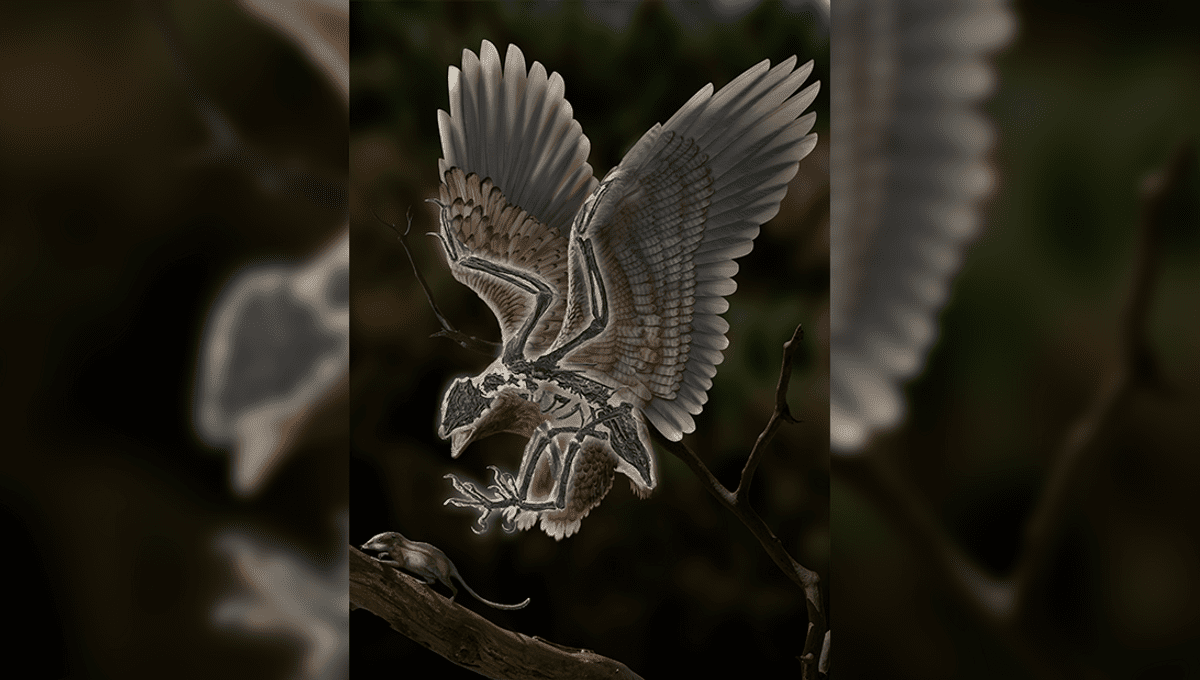
A bizarre fossil of a bird-like creature with the skull morphology of a dinosaur has presented a curious puzzle to palaeontologists. While it’s widely accepted that birds descended from dinosaurs, it’s less common to find entire body parts that seem evolutionarily disparate from one another, but then fossils like this one turn up.
The specimen from China exhibits a dinosaur-like skull sat on top of a body more similar to that of modern birds. Cratonavis zhui, as it’s known, is also peculiar as it has features that differ from that of even ancient birds.
Palaeontologists from the Institute of Vertebrate Paleontology and Paleoanthropology (IVPP) of the Chinese Academy of Sciences scanned the evolutionary oddity using a high-resolution computed tomography (CT)-scanner. Using the resulting images, they could remove the bones to try and piece together the 120-million-year-old puzzle using the bones contained inside the rock.
Rebuilding the ancient skeleton revealed a skull that was almost identical to that of Tyrannosaurus rex, which was odd considering C. zhui had a body more like that of modern birds. The hodgepodge of entire body parts that seemingly hale from different evolutionary timescales can be more eloquently described as a type of mosaicism, which describes something that’s made up of parts that appear unrelated.
It was clear for C. zhui’s dinosaur-like skull that it would’ve been very poor at quacking, unlike its bill-flapping relatives.
“The primitive cranial features speak to the fact that most Cretaceous birds such as Cratonavis could not move their upper bill independently with respect to the braincase and lower jaw, a functional innovation widely distributed among living birds that contributes to their enormous ecological diversity,” said Dr. LI Zhiheng, a lead author of the study, in a statement.
It also differed from ancient birds in having an elongated scapula and first metatarsal. It’s possible this could’ve been an adaptation to make up for the other features of this ancient animal that made it a lousy build for flying.
“The scapula is functionally vital to avian flight, and it conveys stability and flexibility,” said Dr Wang Min, lead and corresponding author on the study. “We trace changes of the scapula across the Theropod-Bird transition, and posit that the elongate scapula could augment the mechanical advantage of muscle for humerus retraction/rotation, which compensates for the overall underdeveloped flight apparatus in this early bird, and these differences represent morphological experimentation in [flying] behavior early in bird diversification.”
The dramatic change that took animals like T. rex and morphed them into later models like the humble chicken is a fascinating area of science, but one that still has many gaps owing to a lack of specimens in which to look for clues. This means that uncovering ancient oddities like C. zhui is an important step for our understanding of the evolution of birds, and we can only hope there are many more dino-headed-bird-bods to come.
The study was published in Nature Ecology & Evolution.
Source Link: Discovery Of A “Bird” With A Head Like T. Rex Puzzles Scientists